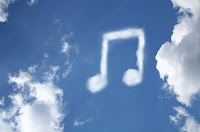First of all, the digital sales were about 660,000, but 440,000 of them came from Amazon's two day $.99 promotion. This set a one-week SoundScan record for most digital sales, and became the eighth best-selling U.S. digital album of all time. But the significant thing here is the price, 99 cents, which we'll get to in a minute.
Next in the news was the fact that Prince just ended his 19 day run playing the Forum in Los Angeles. What's significant here is that the majority of the tickets in the 18,000 seat venue were priced at only $25.
Why is that important? Because it shows a new trend in the entertainment business were price is a motivating factor in purchases.
Way back before music became the commodity that it is today, everyone felt they got a fair value when purchasing either an album or a concert ticket. The price was cheap enough that if you bought something that you didn't like, you didn't feel ripped off or filled with buyer's remorse. It was easy enough to buy the next album or a ticket to the concert without feeling it in your pocketbook too much.
Of course all this changed when Wall Street became involved in the music business after it smelled big money in the 80's. The prices for premium artist's CD's were double what consumers were used to paying for vinyl records, so if you bought one that you didn't like or only had one good song on it, you indeed felt the financial pain of a near worthless purchase.
Likewise for concerts. It was nothing for a music fan to go to several concerts a month during that era. They were cheap enough that you didn't feel like you'd have to miss lunch for the next two weeks to pay for it, and you felt comfortable about spending money to see a new unfamiliar act.
Of course that all changed when the price of tickets, concessions, parking and service charges went to the sky. Music lover's buying habits slowed to only a show or two a year instead of every month. In it's greed, the industry tried to milk every single dime from the consumer at the expense of a making them a returning customer.
With Gaga signing on for the Amazon promotion, it proves that consumers are more price conscious than ever with music, and will buy in large number if the price is right. With Prince lowering the ticket price to $25, and doing a good business in doing so, it proves that people will still show up if the price is right.
Although the numbers are unofficial, it seems that prince sold as few as 6,000 seats on some nights, but that's still enough to make money since both his and the venue's overhead was amortized over the number of dates played. Gaga still sold more than 500,000 albums at $13 to 16, despite the 99 cent promotion (although her number have steeply fallen since), once again proving that online, the more you give it away (or almost give it away), the more you sell.
It's about time that the industry learns that price is a barrier to sales. It's hard to believe they didn't know that in the first place.
-----------------------------------
Help support this blog. Any purchases made through our Amazon links help support this website with no cost to you.You should follow me on Twitter for daily news and updates on production and the music business.
Check out my Big Picture blog for daily discussion of music, recording, and production tips and tricks.




